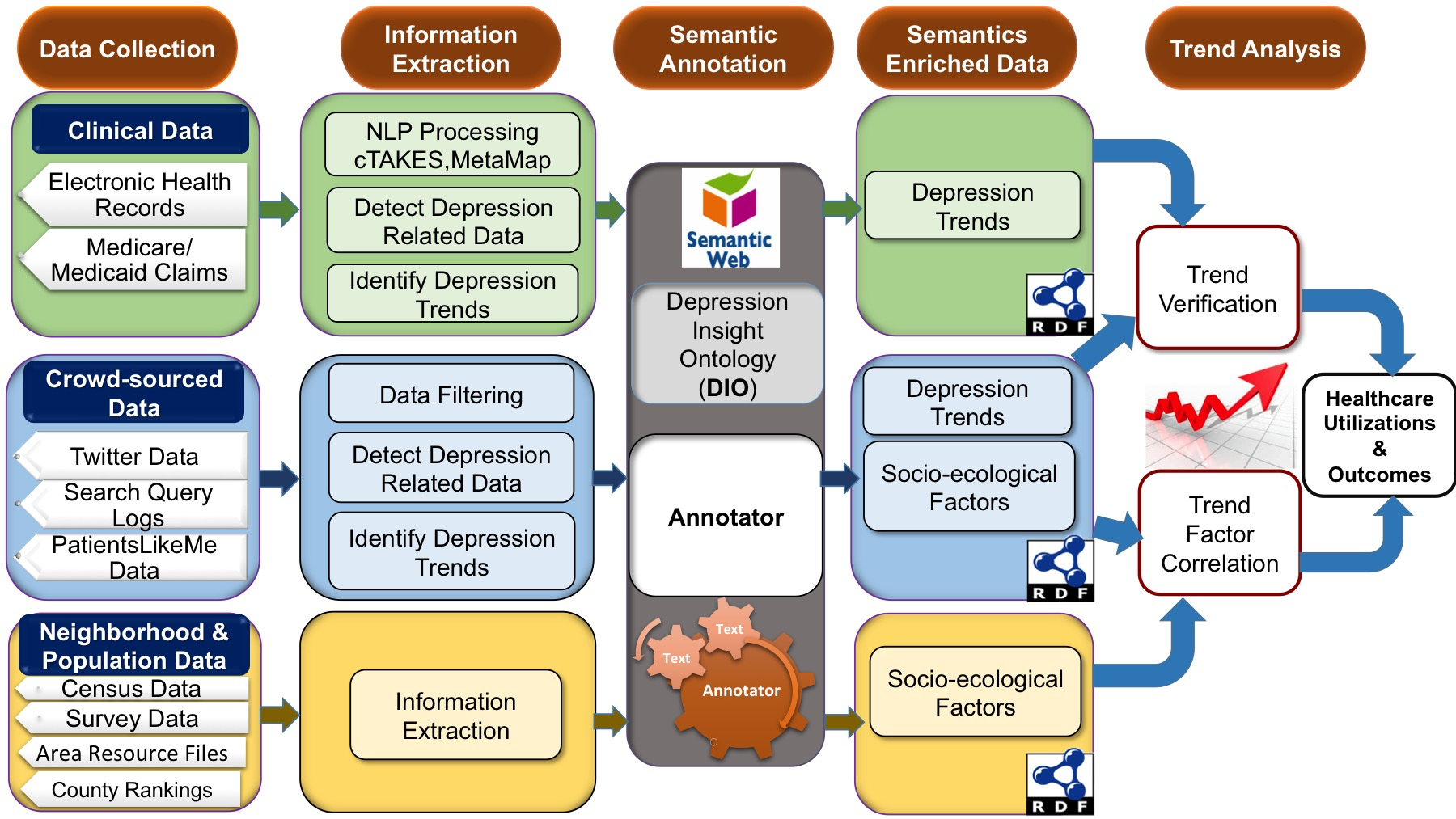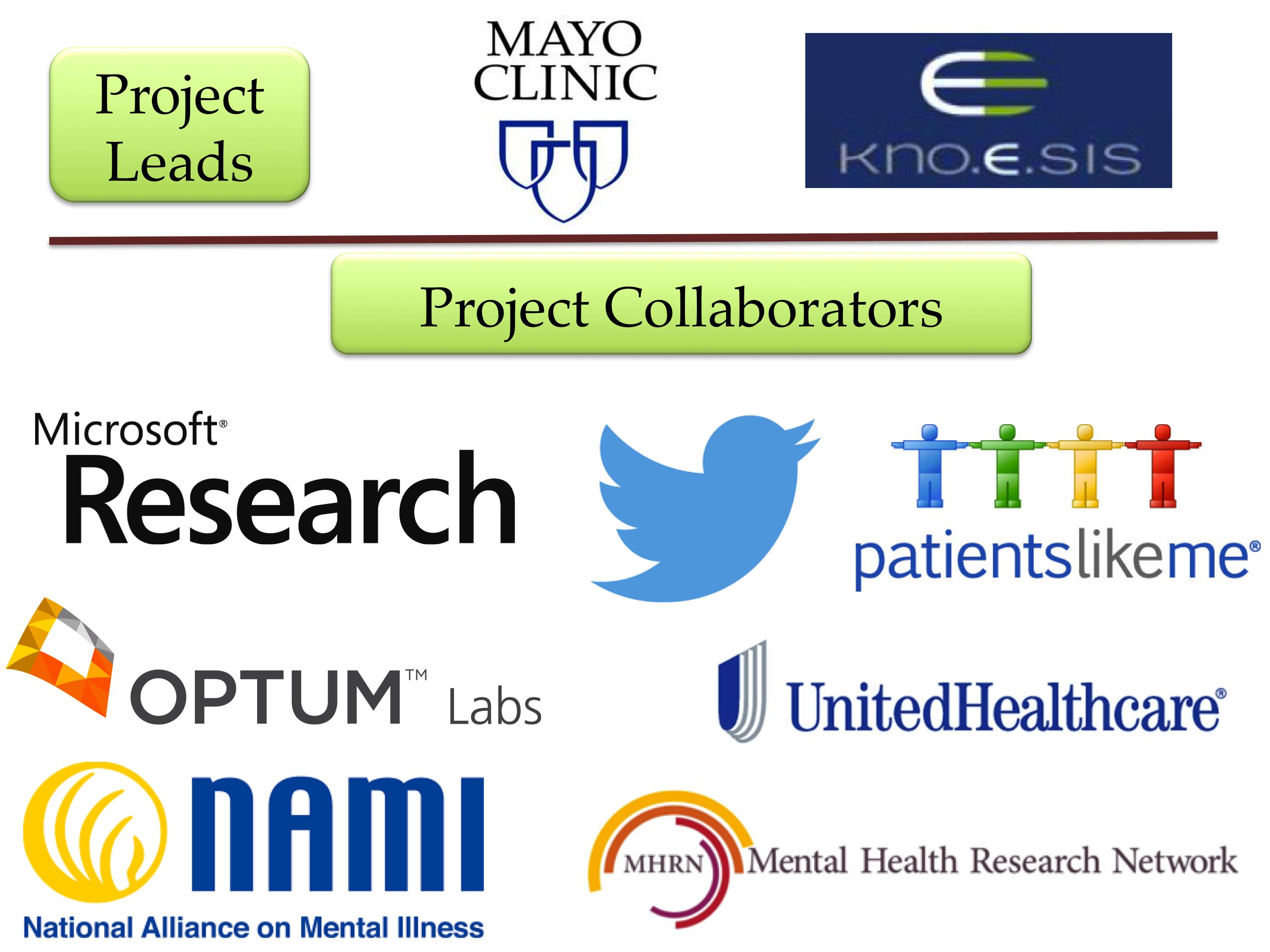Modeling Social Behavior for Healthcare Utilization in Depression
Depression is one of the most common mental disorders in the U.S. and is the leading cause of disability affecting millions of Americans every year. Successful early identification and treatment of depression can lead to many other positive health and behavioral outcomes across the lifespan. This project will apply “big data” techniques and methods for identifying combinations of online socio-behavioral factors and neighborhood environmental conditions that can enable detection of depressive behavior in communities and studying access and utilization of healthcare services.
Contents
[hide]Project Summary
Depression is highly prevalent, both in the US and worldwide. Among US adults, the estimated 12-month and lifetime prevalence rates are 8.3% and 19.2%, respectively. The World Health Organization considers major depressive disorder (MDD) as the third-highest cause of disease burden worldwide, and the highest cause of disease burden in the developed world. However, despite its prevalence and burden, depression remains significantly under-recognized and under-treated in all practice settings, including managed care where less than one third of adults with depression obtain appropriate professional treatment. Denial of illness and stigma are two primary barriers to proper identification and treatment of depression. Many individuals with depression are ashamed to seek out a mental health professional and consider depression a sign of personal weakness. In particular, “self-stigma” has been associated to affect adherence to psychiatric services, hope and quality of life negatively, and also poses as a barrier for social integration. Further, since self-stigma can exist without actual stigma from the public, and is more hidden and inside, it seems to be the worst form of stigma against people with depression and can directly affect the patients’ over all well-being. Studies suggest that early recognition and treatment of depressive behavior and symptoms can improve social function, increase productivity, and decrease absenteeism in the workplace. However, recognition of depression, particularly in early stages, is still challenging.
To address this problem, in this project we plan to develop effective methods for detection of depressive behavior, not only at an individual-level, but also at a community-level. The latter is highly pertinent because depression is significantly influenced by variations in social determinants and socioecological factors. In particular, we will leverage robust and longitudinal electronic health record (EHR) systems at Mayo Clinic and private insurance (UnitedHealthCare/Optum Labs) reimbursement and claims data along with online social media data from Twitter and PatientsLikeMe as well as geo-coded neighborhood and environmental data to develop a “big data” platform for identifying combinations of online socio-behavioral factors and neighborhood environmental conditions to enable innovative ways for detection of depressive behavior within communities and identify patterns and changes in health care utilization for depression across different communities and geographies within U.S.
Funding
|
People
- Principal Investigators:
- Amit P. Sheth (Kno.e.sis, Wright State University)
- Jyotishman Pathak (Mayo Clinic, Contact PI)
- Co-Investigators
- T.K.Prasad (Kno.e.sis, Wright State University)
- Tanvi Banerjee (Kno.e.sis, Wright State University)
- William V. Bobo (Mayo Clinic)
- Nilay D Shah (Mayo Clinic)
- Lila J Rutten (Mayo Clinic)
- Jennifer B McCormick (Mayo Clinic)
- Gyorgy Simon (Mayo Clinic)
- Graduate Students from Kno.e.sis, Wright State University:
- Ashutosh Jadhav
- Amir Hossein Yazdavar,
- SoonJye Kho
Contact: Ashutosh Jadhav
Social Media
Follow us on Twitter
Concurrent Projects
- Context-Aware Harassment Detection on Social Media (NSF)
- Social and Physical Sensing Enabled Decision Support (NSF)
- Project Safe Neighborhood
- EdrugTrends (NIH)
- Innovative NIDA National Early Warning Sysetm Network (iN3)
- MIDAS

